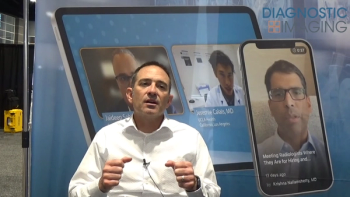
Reducing Mammography Workload by Nearly 40 Percent? What a New Hybrid AI Study Reveals
In a recent interview, Ioannis Sechopoulos, Ph.D, and Sarah D. Verboom, MSc discussed their new research examining the role of certainty in AI mammography screening assessment and the potential impact on workload reduction for radiologists.
Emerging research suggests that a hybrid radiologist/AI screening model — in which the level of certainty with AI findings determines the degree of radiologist involvement — may lead to a significant workload reduction without affecting breast cancer detection rates (CDRs).
In the study, recently published in
In comparison to the European standard of double reading by radiologists, the researchers found that use of the hybrid radiologist/AI screening approach resulted in a 38.1 percent reduction in mammography reading workload for radiologists with comparable CDRs (6.7 percent vs. 6.6 percent) and recall rates (23.9 percent vs. 23.6 percent).
“What we found is that with this hybrid reading strategy, radiologists only needed to read 61.9 percent of the cases, and the other ones were able to be read by AI alone (with) no human interference at all,” noted lead study author Sarah Verboom, MSc, Ph.D(c) in a recent interview with Diagnostic Imaging. “What we saw with this reading strategy that it had no effect on recall rate and cancer detection that stayed completely the same. So we were able to do workload reduction with no changes in the performance.”
During the interview, senior study author Ioannis Sechopoulos, Ph.D., said the next step will be examining the hybrid radiologist/AI screening model in a large prospective study involving mammography screening for 84,000 women in the Netherlands.
“This will give us the real evidence this approach would work, and we'll see, as Sarah said, what workload reduction and or performance we can get out of this hybrid mechanism. (This is) pretty exciting,” added Dr. Sechopoulos, the director of the Advanced X-Ray Tomographic Imaging Lab in the Department of Medical Imaging at the Radboud University Medical Center in Nijmegen, the Netherlands.
(Editor’s note: For related content, see “
For more insights from Dr. Sechopoulos and Ms. Verboom, watch the video below.
Newsletter
Stay at the forefront of radiology with the Diagnostic Imaging newsletter, delivering the latest news, clinical insights, and imaging advancements for today’s radiologists.




























